Greater Trochanteric Bursitis
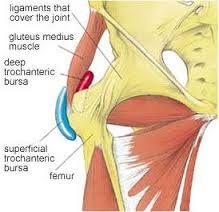 Greater Trochanteric Bursitis can be a very limiting ailment – walking, running, lying down on the affected hip can all be affected by greater trochanteric bursitis.
Greater Trochanteric Bursitis can be a very limiting ailment – walking, running, lying down on the affected hip can all be affected by greater trochanteric bursitis.
Many times, as with knee pain, the hip flexors are weak and have myofascial trigger points. These causes excess pressure over the greater trochanter and an inflammation of the superficial trochanteric bursitis. At Eagle Rock Physical Therapy we have the advanced physical therapy manual skills to rehabilitate the hip flexor (iliopsoas) muscle and restore its strength. We also have the skill-set to mobilize the hip and allow for full motion without pain and dysfunction. We have had enjoyed seeing the pain disappear in our patients as we have employed these techniques with our patients to restore full function in their lives.
STRAIGHT LEG RAISES
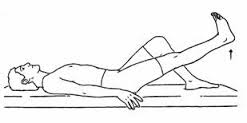 Lying flat on your back – lift your straightened leg straight up and down. Be sure to tighten the quads before doing this and keep the foot pointed straight.
Lying flat on your back – lift your straightened leg straight up and down. Be sure to tighten the quads before doing this and keep the foot pointed straight.
PIRIFORMIS STRETCH
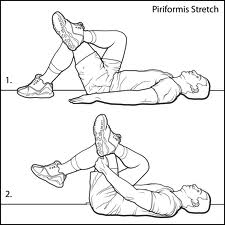 Learning to stretch the piriformis will help in many aspects of life – it is a simple, easy stretch that provides many benefits
Learning to stretch the piriformis will help in many aspects of life – it is a simple, easy stretch that provides many benefits
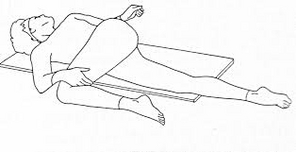 This is another way to stretch the piriformis – lie on back and pull knee up and over the other leg – fell the stretch on the buttocks.
This is another way to stretch the piriformis – lie on back and pull knee up and over the other leg – fell the stretch on the buttocks.
IT-BAND STRETCH
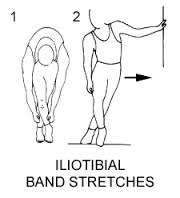 A tight IT-band may be causing IT-BAND SYNDROME – which is excess pressure over the superficial trochanteric bursa causing inflammation of the bursa- this is a good stretch to help stretch out the IT-band and relieve the pressure on the bursa. With this stretch it is also important to completed SLR exercises as above to further relieve the strain on the IT-band.
A tight IT-band may be causing IT-BAND SYNDROME – which is excess pressure over the superficial trochanteric bursa causing inflammation of the bursa- this is a good stretch to help stretch out the IT-band and relieve the pressure on the bursa. With this stretch it is also important to completed SLR exercises as above to further relieve the strain on the IT-band.
 Complete this stretch bending away from the side of pain – this way the IT-band can be stretched and lengthened and pressure can be relieved from the superficial trochanteric bursa.
Complete this stretch bending away from the side of pain – this way the IT-band can be stretched and lengthened and pressure can be relieved from the superficial trochanteric bursa.
If you have any questions, or need help with the greater trochanteric bursitis in any way – give us a call and we would love to help you – 208-522-7627.
